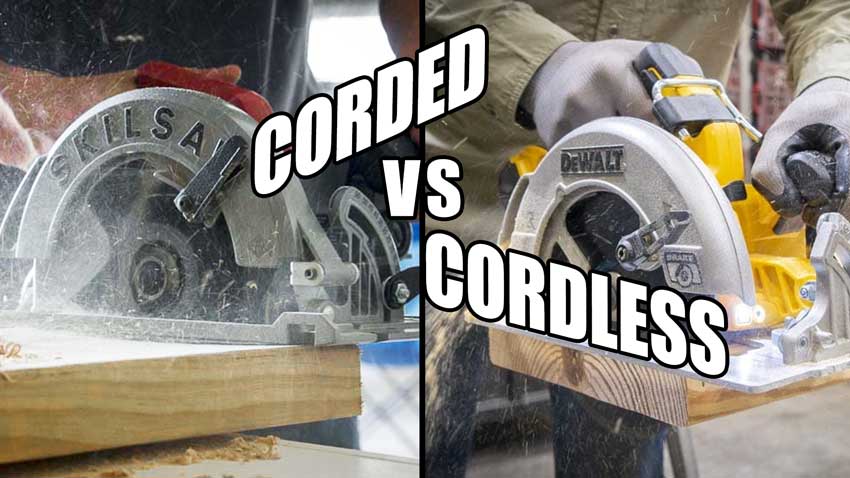We talk about the cordless jobsite pretty frequently. When it comes to the corded vs cordless tools question—can battery truly render the cord obsolete? The math doesn’t add up, right? Actually, it does.
As manufacturers push into more powerful cordless tools, the concept of switching out your corded tools without power trade-offs is compelling. What’s more, these new cordless (battery-powered) tools are even encroaching on gas-powered equipment!
Table of Contents
You Have to Do the Math
We had to stop and think when asked how can cordless tools replace corded tools? The math didn’t—at first glance—seem to add up. The initial question came through on our Milwaukee RedLithium High Output Battery article, and it’s a really good one. Here’s the rationale:
120 volts x 15 amps = 1800 total watts
18 volts x 15 amps = 270 total watts
or even…
36 volts x 15 amps = 540 total watts
…and we can keep going, of course. Any cordless tool producing 15 amps can’t possibly be as powerful as a 15-amp corded model. There must be something more.
There is—and we see it with both automotive and marine batteries. These often produce over 1000 cranking amps from a 12V product! In reality, they can technically produce these amps with just 7.2 volts!
How Corded Tools vs Cordless Tools Use Current
So how can cordless tools replace corded tools and have the same power capabilities? They use or produce more current. Much more, in fact. Running as many as 100 amps to power a tool seems awfully high, but that’s exactly what’s going on in these batteries.
18 volts x 100 amps = 1800 total watts
Notice that as you increase the voltage, the extra current you need comes down.
36 volts x 50 amps = 1800 watts
In order for the battery pack to only provide 15 amps of current to match what you get out of the wall, it would also have to be wired for 120 volts (DC). We realize you can make a lot of additional corrections and statements about how exactly current works in batteries—but our example should suffice for helping you understand the basics. Check out this white paper from Sila if you want to go into more depth.
Why Can’t You Just Make a 120V Battery?
Keep in mind that many manufacturers list a “Max voltage“, which is the voltage at the pack’s highest charge state. It quickly drops ~10% down to its “nominal” voltage where it operates most of the time. So, you’re looking at a tool that would be 133V Max to match the 120V coming out of your wall.
In case it comes up on Final Jeopardy, that would be sets of 37 18650 cells!
While we know of a miter saw and some outdoor power equipment that does indeed run at 120V (Max), it probably doesn’t need to. Some increase in voltage helps, but modern battery packs can handle the higher current output. To put it plainly, 36V gets you there and anything at or above 60V can do just about anything gas can do. The only issue becomes runtime.
Three Things Coming in the Future for Corded vs Cordless Tools
1) Battery Cells with More Power Density
When I spoke with Paul Fry, Cordless Guru for Milwaukee Tool (my title for him, his official title is VP of Product Management), he gave me a little more insight into how cordless tools are replacing corded tools. He said the original batch of lithium-ion tools that came out years ago could only produce a few hundred watts out max. With better cell and tool technology, manufacturers can now produce a few thousand watts out.
And it only gets better when you factor in improvements like new 21700 lithium-ion battery cells.
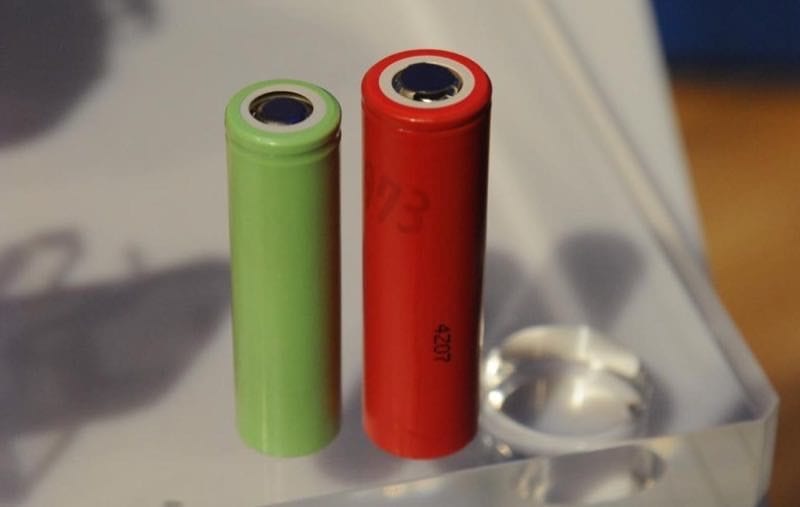
2) Bigger Batteries – More Rows of Cells Equals Less Current Per Cell
The question used to be how to manage high current output with enough runtime. Getting 1800 watts to exceed 15-amp corded tools is not only doable, but it’s also effective. Manufacturers have now made significant strides in run-time thanks to better cell technology. We’re also seeing larger battery packs that use as many as three parallel rows of cells.
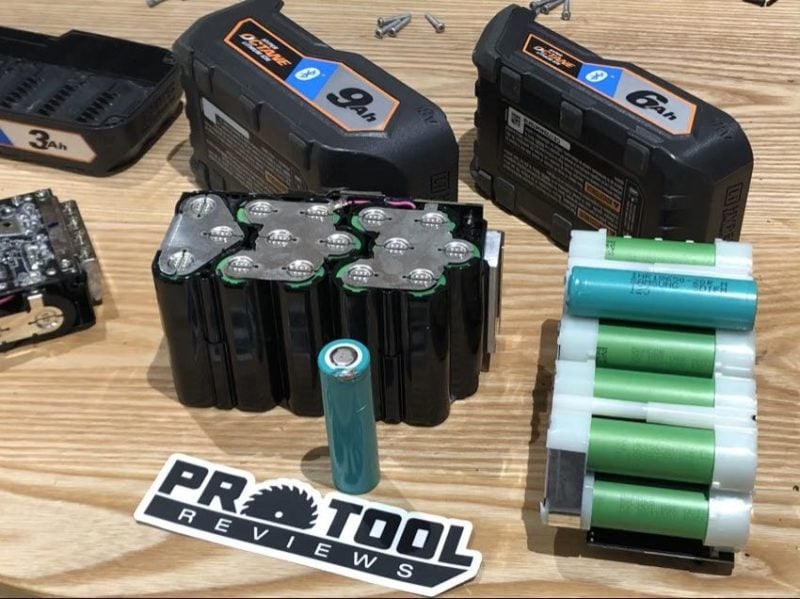
The primary difference between an 18V pack with 5 cells and one with 15 cells is three-fold:
- 5-cell “compact” batteries have to generate all that current from just 5 cells. The 15-cell pack distributes it across 3X as many cells.
- 15-cell packs generate more overall heat—even though the individual cells are taxed less. That center row of cells needs to “breathe”.
- 15-cell packs run longer due to more capacity AND having that capacity spread across a higher number of Lithium-ion cells.
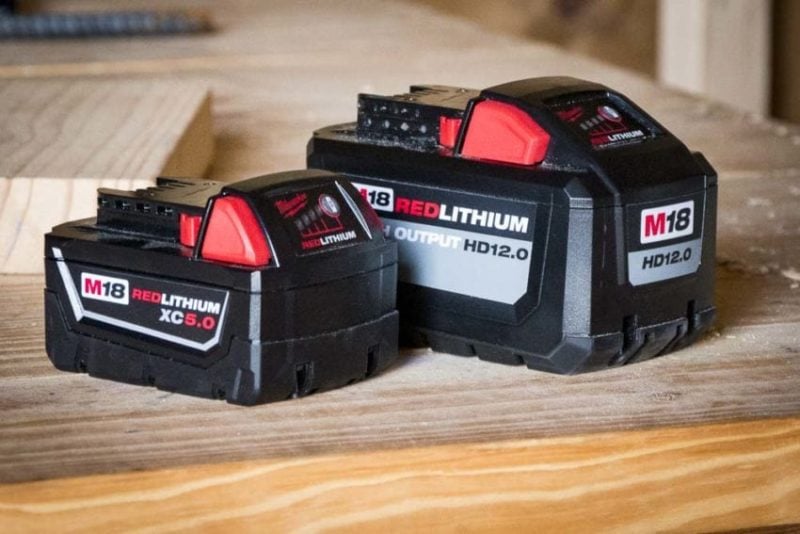
3) Stacked Lithium Pouch Cells, Tabless Batteries, and Other Tech
The future could hold additional improvements as well. We already have stacked pouch cell batteries in Flex Stacked Lithium and DeWalt Powerstack. Those batteries feature increased power output among other advantages (like reduced pack size). We expect to see tables batteries with dramatically improved cooling in the near future as well.
Aside from this, we’re seeing news of solid-state battery technology and the use of graphene technology in lithium-ion to improve charging speeds. The use of lithium-silicon also promises faster charging and greater power density for all Lithium-ion battery types. This could also yield more output beyond what you can get from a typical 15A wall circuit.
Taking on Even Larger Equipment
One of the latest advancements in cordless battery-powered tools has involved equipment. By equipment, we mean tools that typically ran on 120V or gas power. Milwaukee MX FUEL equipment comes to mind as do new products using Hilti Nuron technology. These include products like the Milwaukee MX FUEL breaker and the Hilti Nuron cut-off saw.
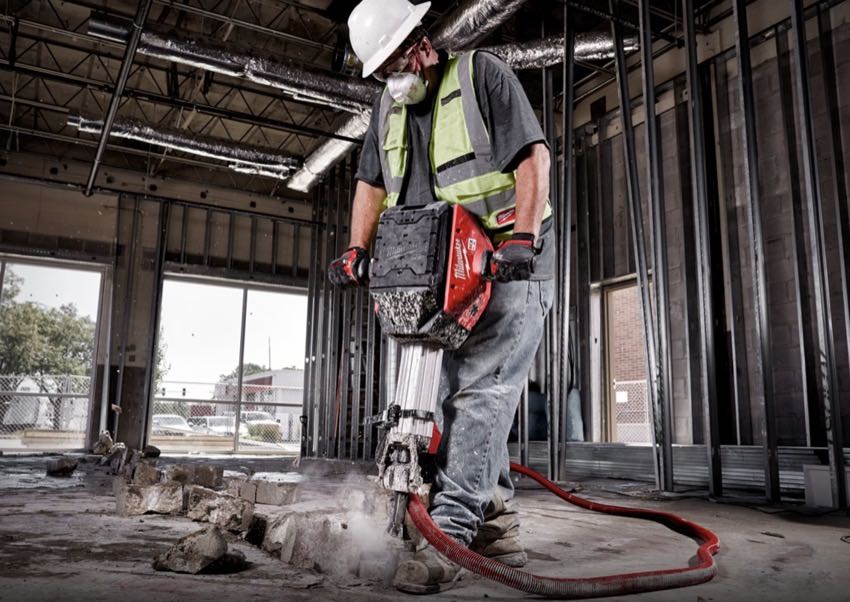
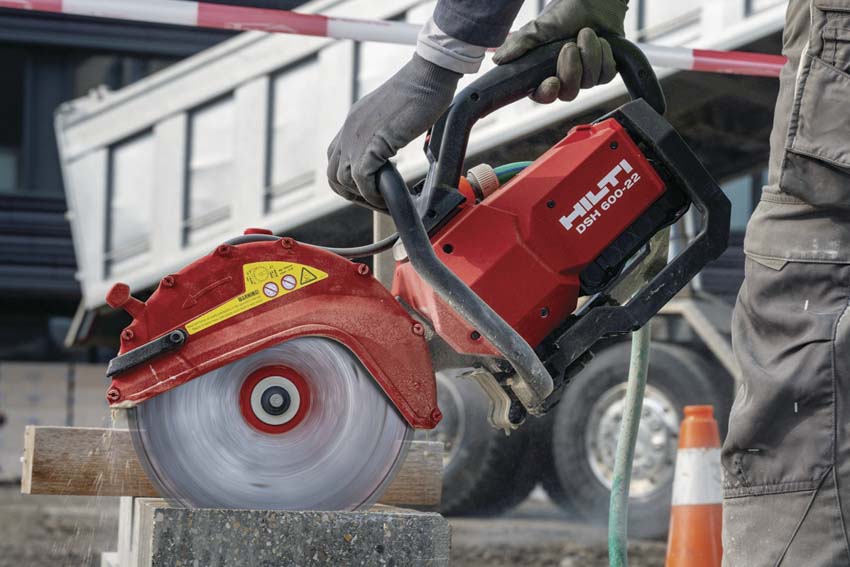
While not complete replacements due to runtime limitations, these battery-powered cordless tools are perfect for replacing corded tools when the jobsite calls for them. In particular, they help when eliminating exhaust fumes matters while working indoors. Cordless battery-powered equipment can reduce setup time and help speed up load-in and load-out on smaller jobs.
Final Thoughts
The corded vs cordless tools debate used to be…well, more of a debate. Now it almost seems inevitable. As more and more companies and tradespeople lean into battery-powered solutions, the technology seems to be keeping pace. In fact, the falling costs of batteries (inflation notwithstanding) alongside the improvements in power density seem to have ushered in a whole new way of looking at jobsite productivity.
We love it. It makes our jobs far more interesting! In the end, some of the upcoming technological advancements should solve the remaining issue of runtime. As both tools and batteries continue to mature, we can’t help but feel optimistic.

